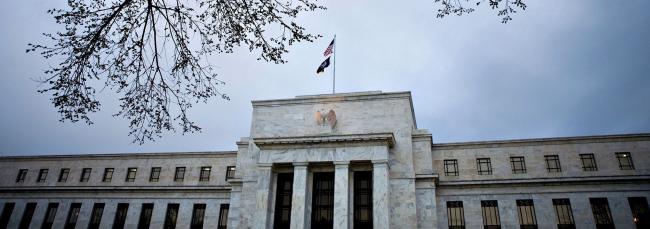(Bloomberg) -- The Federal Reserve decision to halt interest-rate cuts amid lingering global economic gloom may have given bond traders just the thing to reboot this year’s best trade -- buying long-dated government debt.
Top-rated markets from the U.S. to Germany saw securities due in 10 years or more rally Thursday, outpacing short-dated ones, dragging yield curves down from the steepest levels in about three months. Mizuho International Plc suggests that investors position for an extension of the move with so-called flattener trades, which profit when longer-term yields fall faster than near-maturity ones.
The latest bond gains signal a return, after a two-month letup, to the bullish tone that fueled a stellar rally earlier this year. Bonds due in 10 years and longer returned 14% since Dec. 31 as growth pessimism fueled a flight into the safest assets. That compares with 5% for debt of maturities up to five years.
While demand for far-maturity sovereign debt should continue amid unresolved global trade tensions, a Fed policy pause means less downward pressure on short-term yields -- and that points to a flatter yield curve.
“There is a pretty clear return in demand for global rates duration,” said Peter Chatwell, head of European rates strategy at Mizuho. “The Fed’s pause is not an end to its easing cycle, but for now it means U.S. curves can bull-flatten rather than steepen.”
Thursday’s bond rally suggested some amount of market skepticism over Fed Chair Jerome Powell’s remark that U.S. monetary policy is now in a “good place” -- an assurance that may have been partly overshadowed by China casting doubts about the possibility of a comprehensive long-term trade deal with the U.S.
The yield premium on 10-year Treasuries over two-year notes fell two basis points Thursday to 15 basis points, extending a pullback from an Oct. 29 high of 20 basis points, which was the highest since July. A similar spread in Germany declined two basis points to 25, compared with an Oct. 22 high of 32 basis points that was the most since Aug. 1. The yield on U.S. bonds due in a decade slumped seven basis points Thursday to 1.70%, the biggest decline since Sept. 24.
Mizuho recommends buying 30-year Dutch bonds versus selling French 10-year debt. That’s in addition to outstanding flattener recommendations in the U.S. and Australia.
